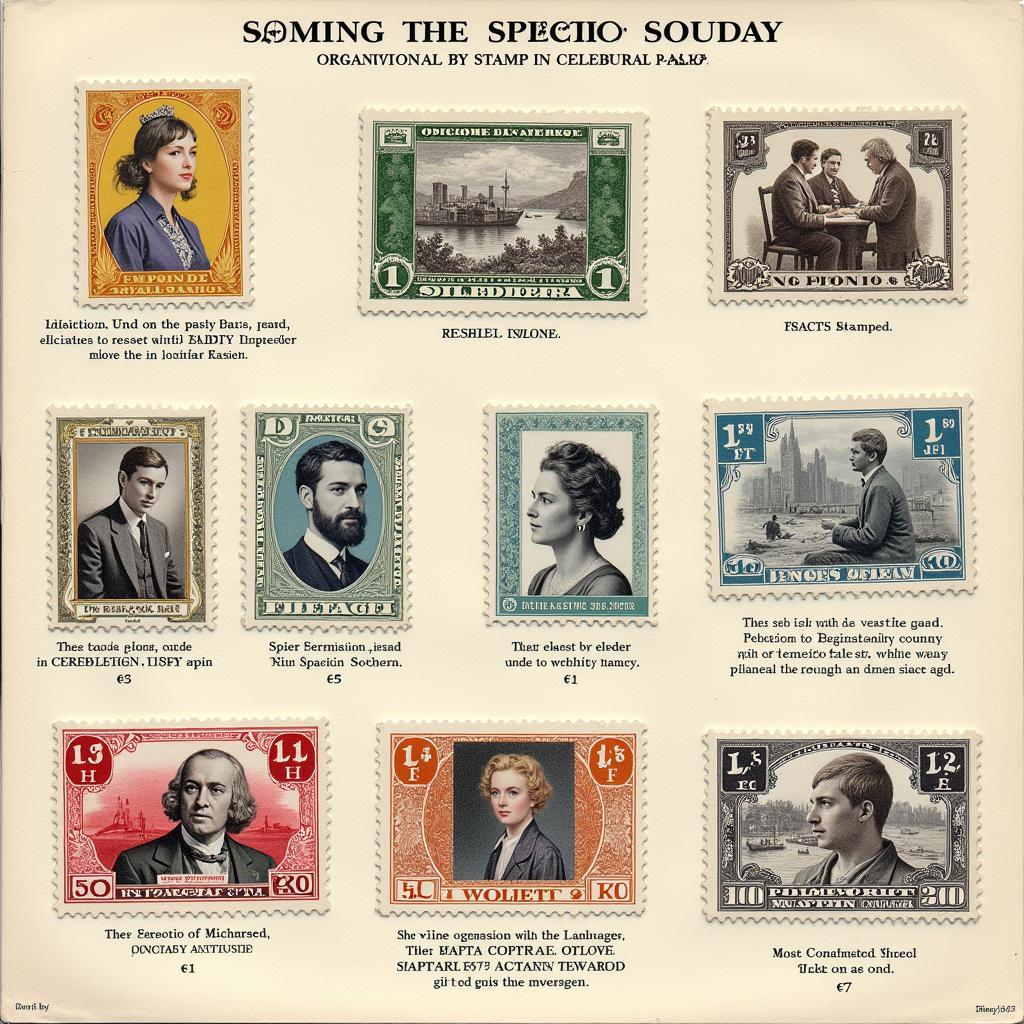The term “Spastic Society Stamps” often leads to confusion and misunderstanding. This article delves into the history and evolution of the imagery used by organizations supporting individuals with cerebral palsy, formerly referred to as “spastic.” We’ll explore the transition from potentially outdated terminology to more inclusive and respectful language, examining the impact of such changes on fundraising efforts and public perception.
The Evolution of Terminology and Imagery: From “Spastic” to Inclusive
The word “spastic” was once commonly used to describe individuals with cerebral palsy. Organizations like the Spastic Society (now known as Scope in the UK and Cerebral Palsy Alliance in Australia) utilized this term in their name and fundraising campaigns, including stamps. However, over time, the term became increasingly associated with negative connotations and was considered derogatory. This shift in understanding prompted organizations to adopt more person-first and respectful language, replacing “spastic” with “cerebral palsy.” This change reflected a broader societal movement towards inclusivity and a recognition of the importance of person-first language in empowering individuals with disabilities.
This evolution also affected the imagery used in fundraising materials, including stamps. While older stamps might depict individuals in ways that are now considered outdated or stereotypical, modern campaigns focus on showcasing the abilities and potential of people with cerebral palsy, emphasizing their full participation in society.
 Historical Examples of Spastic Society Stamps
Historical Examples of Spastic Society Stamps
The shift in terminology and visual representation highlights the ongoing effort to promote understanding and respect for individuals with cerebral palsy.
The Impact of “Spastic Society Stamps” on Fundraising and Public Perception
The use of “spastic” in historical fundraising campaigns, like the sale of stamps, had a complex impact. While it raised awareness and generated funds for crucial services, it also inadvertently perpetuated stigmatizing language. This presented a challenge for organizations: balancing the need for financial support with the responsibility to promote positive and accurate representations of the community they served. The transition to more inclusive language and imagery demonstrates a commitment to prioritizing respect and dignity alongside fundraising goals.
Modern campaigns emphasize the importance of seeing the individual beyond the disability, fostering empathy and understanding within the wider community.
Why Did the Term “Spastic” Become Outdated?
The term “spastic” became outdated primarily due to its negative connotations and association with mockery. While it originally referred to muscle spasms, a common symptom of cerebral palsy, it evolved into a derogatory term used to insult or belittle individuals. This negative usage overshadowed its medical meaning, making it inappropriate and hurtful in most contexts.
Dr. Emily Carter, a leading expert in disability studies, explains, “The power of language cannot be underestimated. Using respectful and person-first language is essential for creating an inclusive society where everyone feels valued and respected.”
The rejection of the term “spastic” signifies a crucial step towards creating a more inclusive and respectful environment for individuals with cerebral palsy.
How Can We Support Organizations Working with Individuals with Cerebral Palsy?
Supporting organizations working with individuals with cerebral palsy goes beyond simply understanding the history of terms like “spastic society stamps.” It requires active engagement and allyship. Here are some ways to contribute:
- Donate: Financial contributions directly support vital services and programs.
- Volunteer: Offer your time and skills to support various initiatives.
- Advocate: Speak out against discrimination and promote inclusive policies.
- Educate: Learn more about cerebral palsy and challenge misconceptions.
- Support Inclusive Businesses: Patronize businesses that prioritize accessibility and employment opportunities for individuals with disabilities.
By working together, we can create a more inclusive and equitable world for individuals with cerebral palsy.
Conclusion
Understanding the history of “spastic society stamps” offers valuable insight into the evolution of language and its impact on the disability community. By embracing respectful and person-first language, we can foster greater understanding, empathy, and inclusion. Let’s continue to support organizations working tirelessly to empower individuals with cerebral palsy and create a world where everyone can thrive. The journey towards a more inclusive society requires ongoing effort, education, and a commitment to challenging outdated terminology and perceptions.
FAQ
- What is cerebral palsy?
- What are some common misconceptions about cerebral palsy?
- How can I get involved in supporting individuals with cerebral palsy?
- What are some resources available for families affected by cerebral palsy?
- What is the significance of person-first language when referring to individuals with disabilities?
- How has the portrayal of individuals with disabilities evolved in media and advertising?
- What are some current initiatives promoting inclusion and accessibility for people with cerebral palsy?
If you need further assistance, please contact Phone Number: 02043854663, Email: [email protected] or visit us at Address: Khu 34, Bac Giang, 260000, Vietnam. We have a 24/7 customer support team.